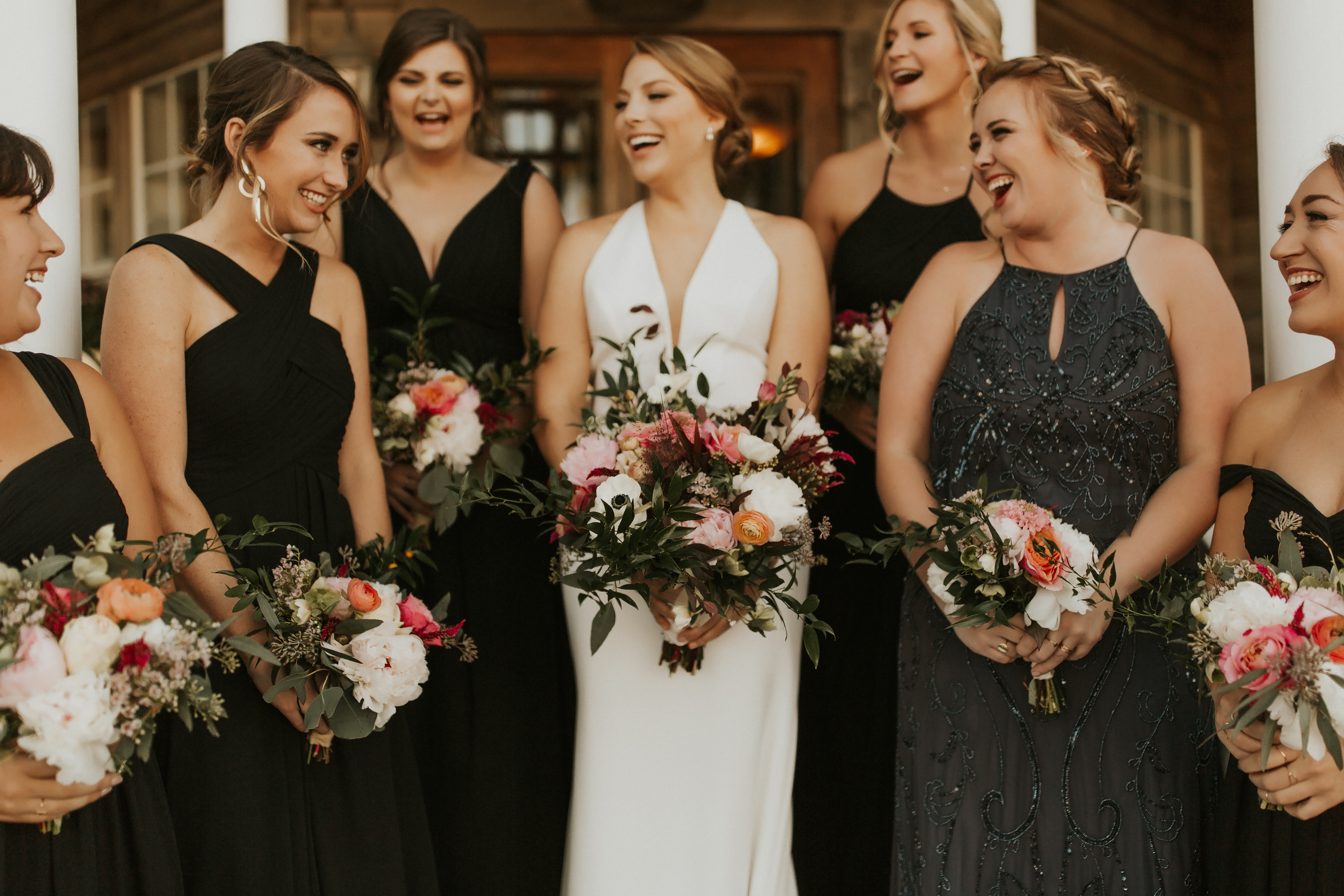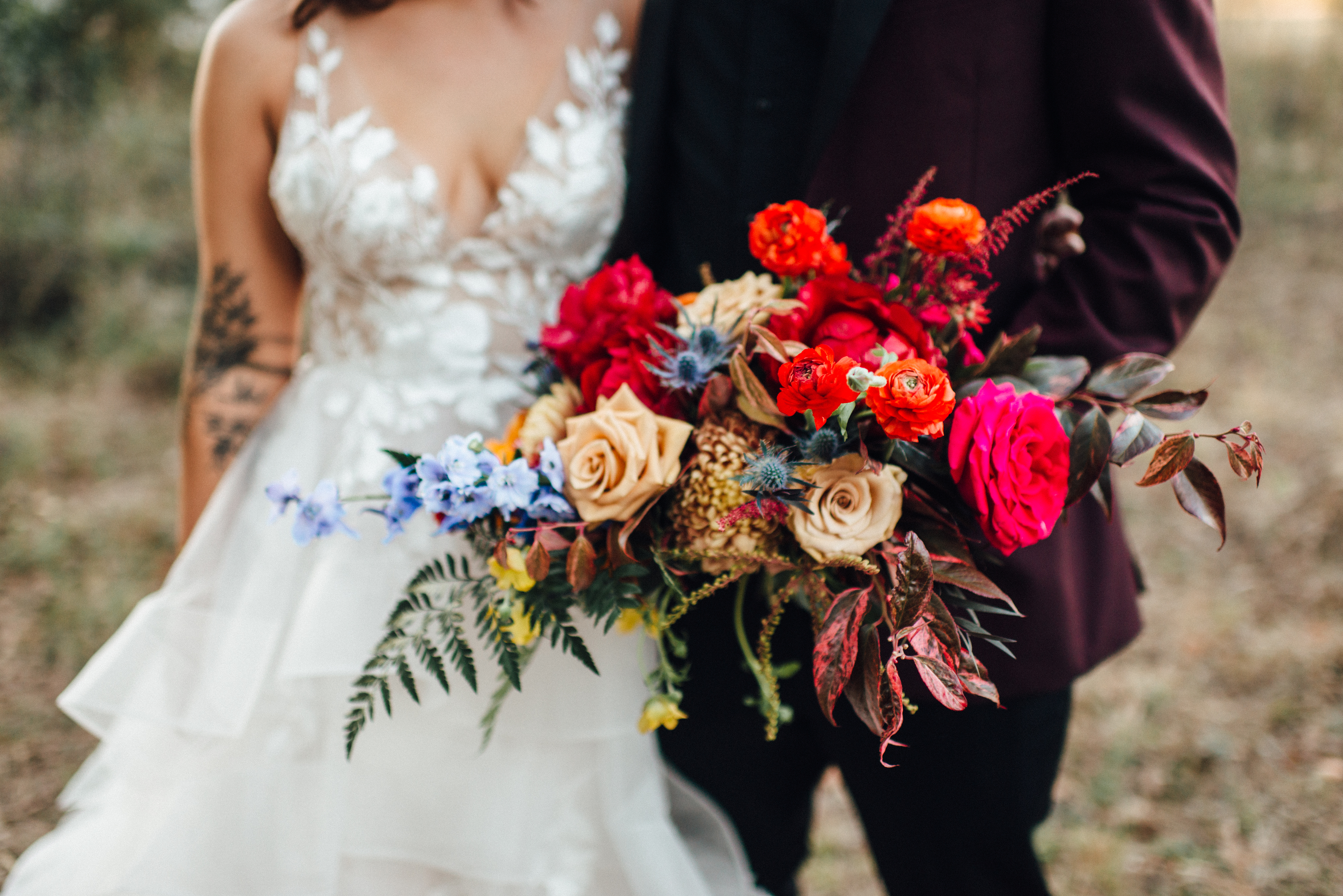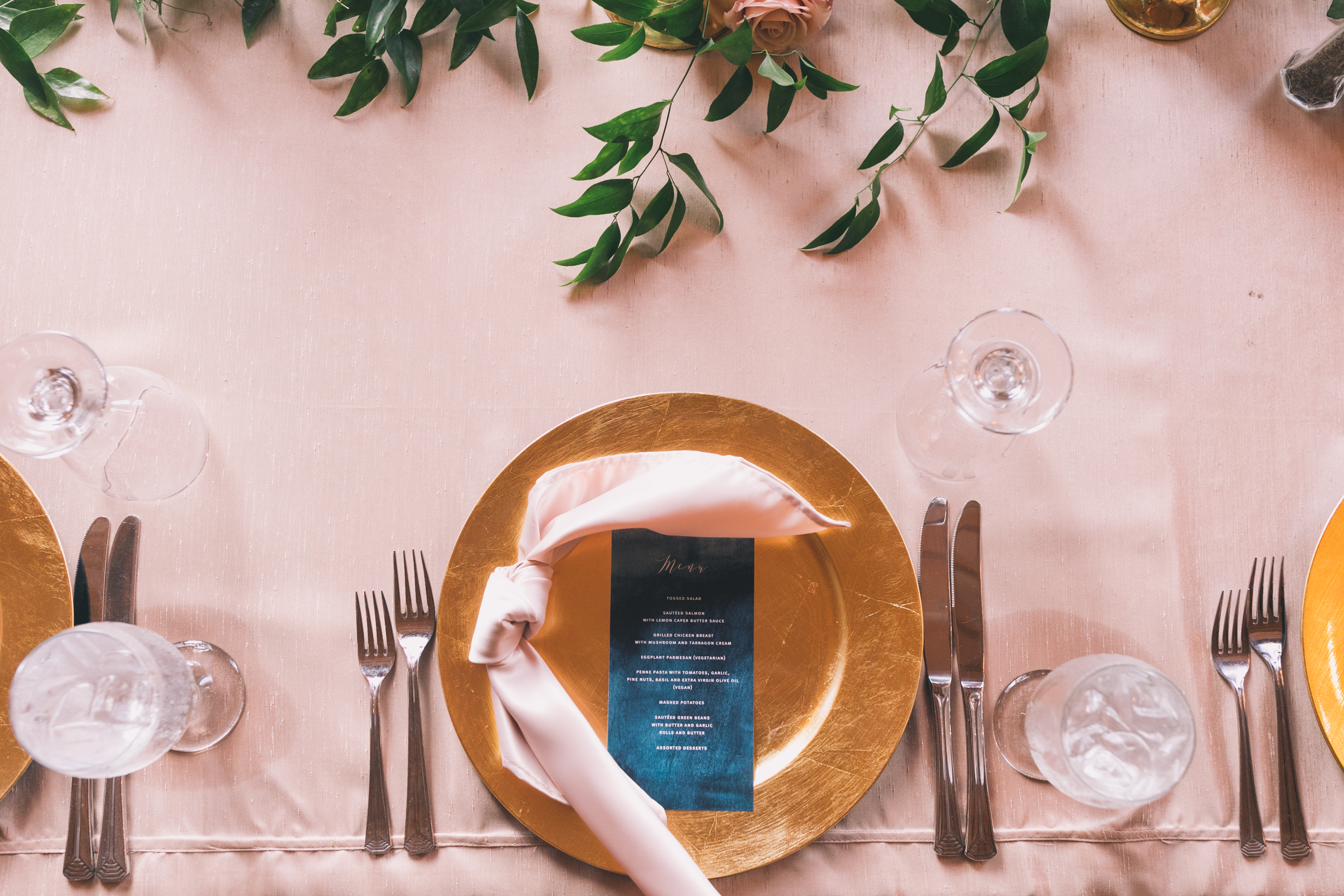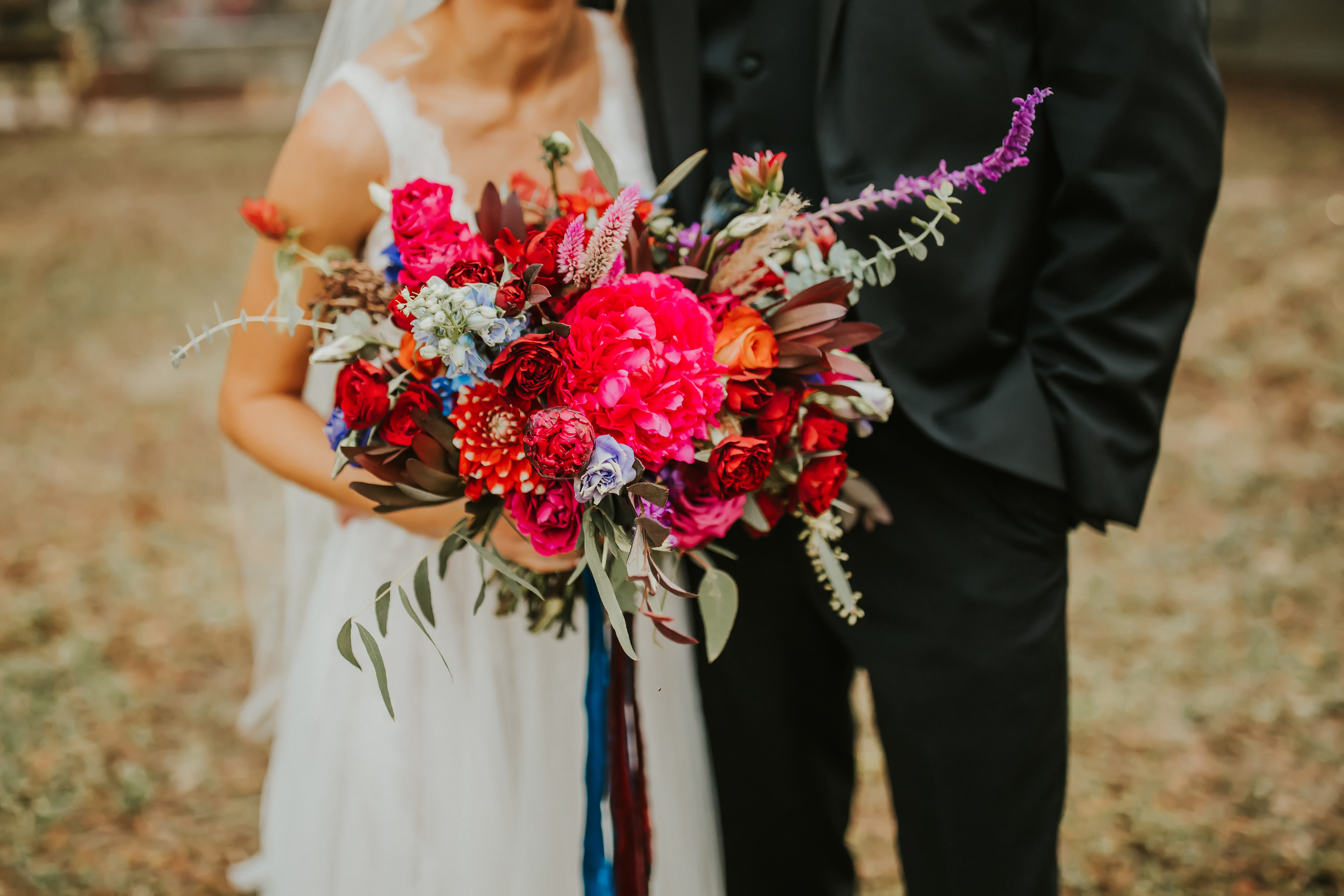Tips for Selecting Your Wedding Color Palette
By Rebecca Padgett Frett
When planning my own wedding, one of the planning processes I enjoyed most was selecting the color palette around which much of my wedding would revolve. These hues were reflected in my bridesmaids’ dresses, the florals, the invitations, the décor, the groomsmen’s outfits, my accessories and more.
Typically a wearer of neutrals, I looked instead for a color palette of the rich jewel tones best suited for winter months that were bright enough to exude warmth and happiness. Burgundy, fuchsia, cornflower blue, indigo and gold still please my eye when I see my wedding photos.
Color can evoke emotions, emphasize a season, set a mood and create a lasting impact. The color scheme you select for your wedding will not only surround you on your wedding day, but will be ever present in your photographs. Compiled are some ways to plan your palette.

- Get Inspired
If you have a Pinterest board that’s wedding related, this is the best place to start. Look at what you tend to pin and determine if there are reccurring colors. Do you lean towards neutrals, pastels or bold colors? Flip through some wedding magazines or scroll online and see what catches your eye. It’s also wise to look at your life; what colors do you tend to wear or decorate your home with? Do you want to stay in your comfort zone or go for something unexpected with your wedding? Are you a trend follower or trend setter?
- Consider Your Setting
When you think of your color scheme, think about your venue. Will hot pink bridesmaid’s dresses clash with the fire engine red carpet of the church? Is your venue more of a blank slate or does it already have a strong color scheme? While your venue shouldn’t completely stop you from going with a color you adore, it’s something to consider, and it will help guide your decision making.
- Seasonal Hues
Pastels work for spring, bright colors for summer, warm tones for fall and jewel and darker hues for winter. Let’s say your favorite color is pink and you want to include it in your wedding. Think rose for spring, coral for summer, blush for fall or mauve for winter.

- Floral Favorites
If selecting colors is difficult, but you have flowers you favor, let them lead your selections. If you must have red roses, sunflowers, white orchids or pink chrysanthemums, revolve your palette around the plants.
- Mood in Mind
When you envision your wedding, what do you want guests to experience? Do you want to create a classy and refined atmosphere? Try classic, neutral shades such as whites, ivory, black, silver, gold or navy. If you’re going for a unique and lively look, consider bright pinks and purples, bold blues, yellows, oranges or reds.
- Color Pairings
Have colors in mind but not sure how they will mesh? Consult the color wheel. For color palettes, there’s the neighbor method and the opposites method. Neighbors on the wheel pair well together because they are similar. The opposites method considers colors across from each other on the wheel — typically a cool tone paired with a warm tone. The best way to build your palette is by pairing a heavily saturated color with a neutral and adding in complementary colors. A color palette consisting of four or five colors is standard.

Sample Color Palettes:
Emerald, ruby, plum, navy, gold.
Tan, ivory, blush, terra Cota.
Mauve, blush, gold, ivory, lavender.
Emerald, sage, marigold, light pink, burnt orange.
Plum, wine, lilac, mauve, ivory.
Marigold, coral, lilac, orange, sunflower yellow.
Black, copper, orange, light pink, teal.
Navy, ivory, gold, dark green.




